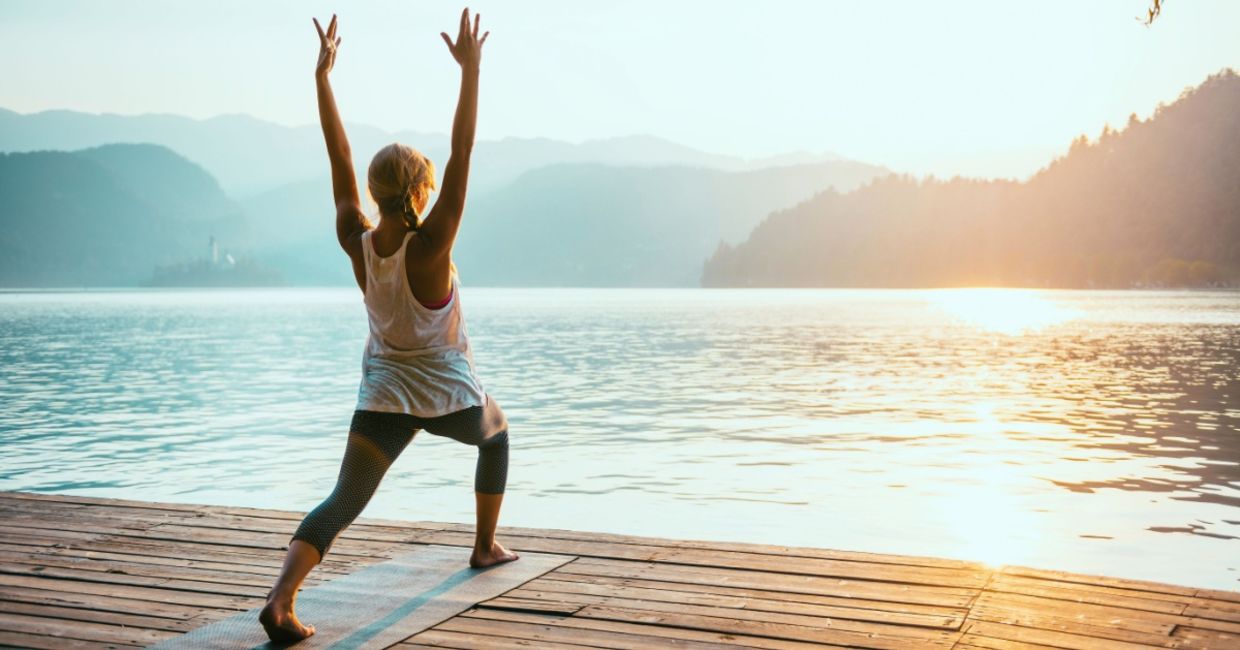
(Microgen / Shutterstock.com)
Sun salutations, or surya namaskar in Sanskrit are a series of twelve yoga postures devoted to celebrating the sun. In fact, surya means sun and namaskar translates to I bow to you with respect. In essence, the name reflects the practice of bowing to the sun, according to Yogapedia .
Sun salutations are a fundamental series of movements synchronized with your breath. The purpose of this flow is to connect you with the light of life. While you can practice sun salutation yoga in a variety of ways, according to the Do You health app, you should follow these 12 yoga poses in the chronological order to reap all the benefits.
Pranamasana
Begin your sun salutation practice with the simple prayer pose, according to the online resource Yoga Basics. To begin, arrive at the top of your mat with your feet close together. Then allow your hands to softly drop down beside your body. Just take a few moments here to breathe. As you inhale, raise your arms and exhale as you bring them down into a prayer pose in front of you.
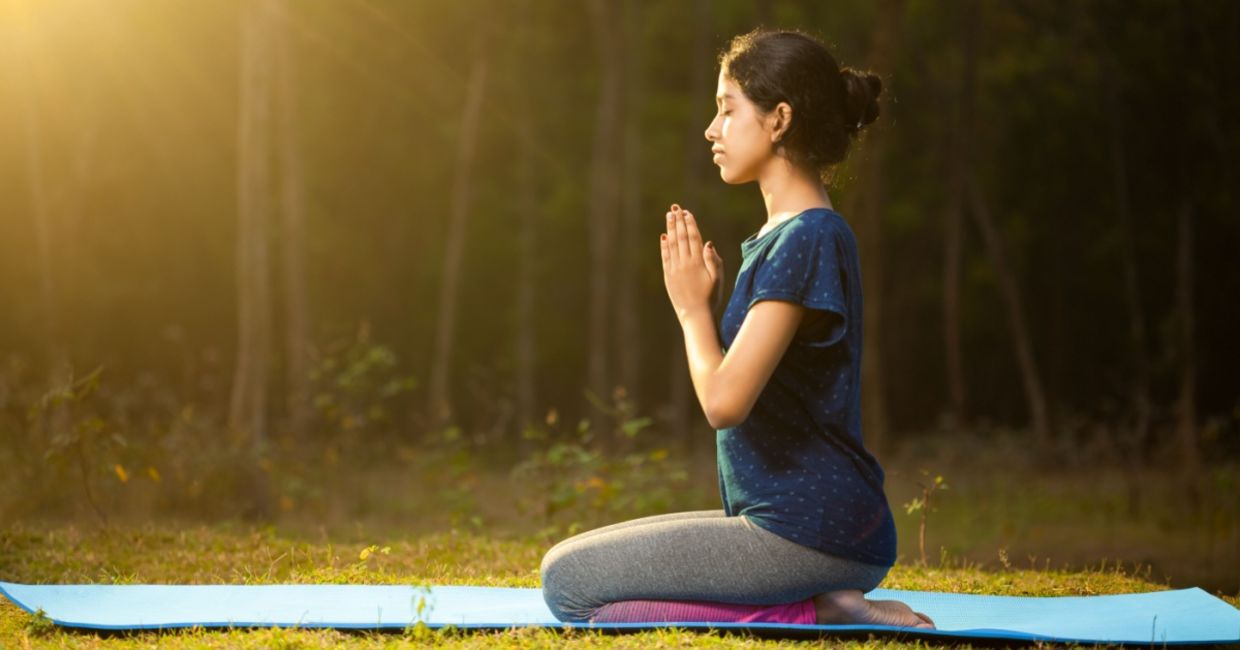
(Dharmapada behera / Shutterstock.com)
Hasta Uttanasana
Practicing this pose could help improve digestion by toning the organs of your abdomen, according to the yoga guide Yogic Way of Life. To enter the pose, gently raise your arms upwards, keeping this prayer position and introducing a slight standing back-bend. Remember to allow the breath to guide you with every inhale and exhale. The key here is to keep your arms close to your ears and pull upwards through your fingertips.
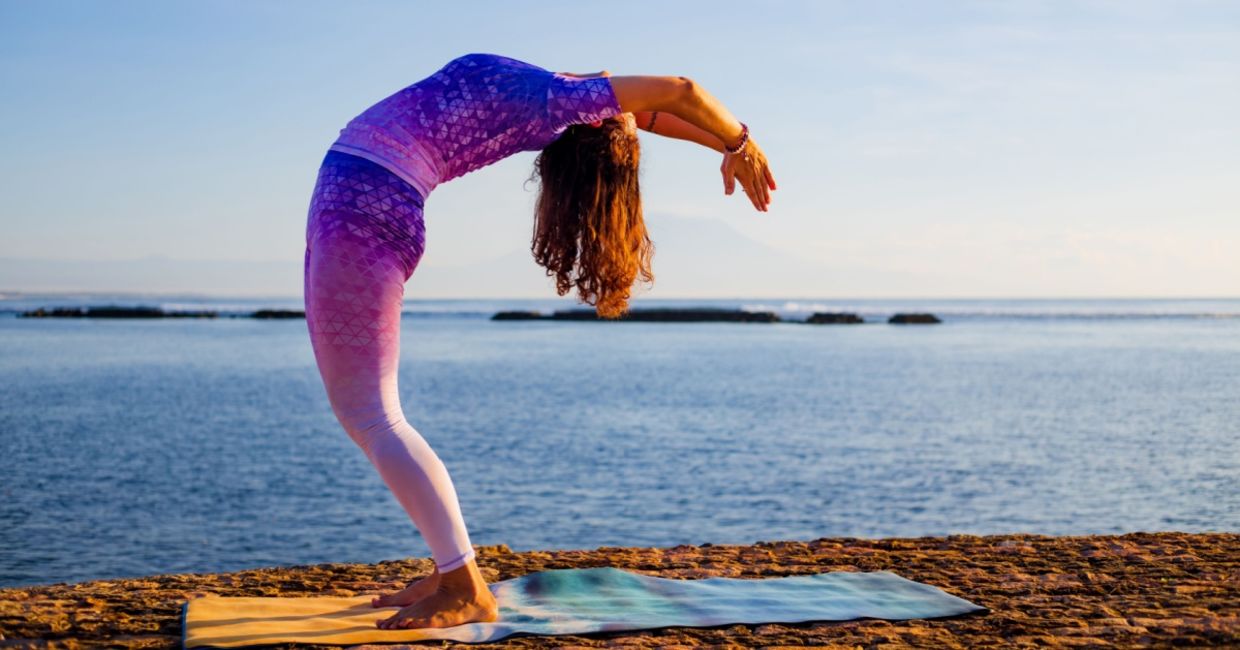
(Olga Gauri / Shutterstock.com)
Uttanasana
The uttanasana yoga pose activates the parasympathetic nervous system to soothe stress, according to Yoga Journal. Begin by hinging forward from your hips as you keep your back straight. Ultimately, you want to reach as deep as you can to touch the ground but do not push yourself too far to avoid injuries. This entire posture should flow with your exhale.

(fizkes / Shutterstock.com)
Ashwa Sanchalanasana
The ashwa sanchalanasana yoga pose acts as an excellent hip opener, explains the Inside Yoga website. People with sciatica will greatly benefit from this pose. Begin by taking one foot forward, keeping your thigh parallel to the mat, it's time for your next inhale. To begin, hold onto your hips or lower back with your hands, and your head is held high. While your front leg faces forward, your back leg remains rested on the mat.

(Ziesel / Shutterstock.com)
Chaturanga Dandasana
The chaturanga dandasana pose connects with the manipura chakra, according to Healthline. It is here that you can develop confidence, determination, and courage. In this sun salutation, your entire body should be parallel to the ground. Find your balance on your palms and toes.
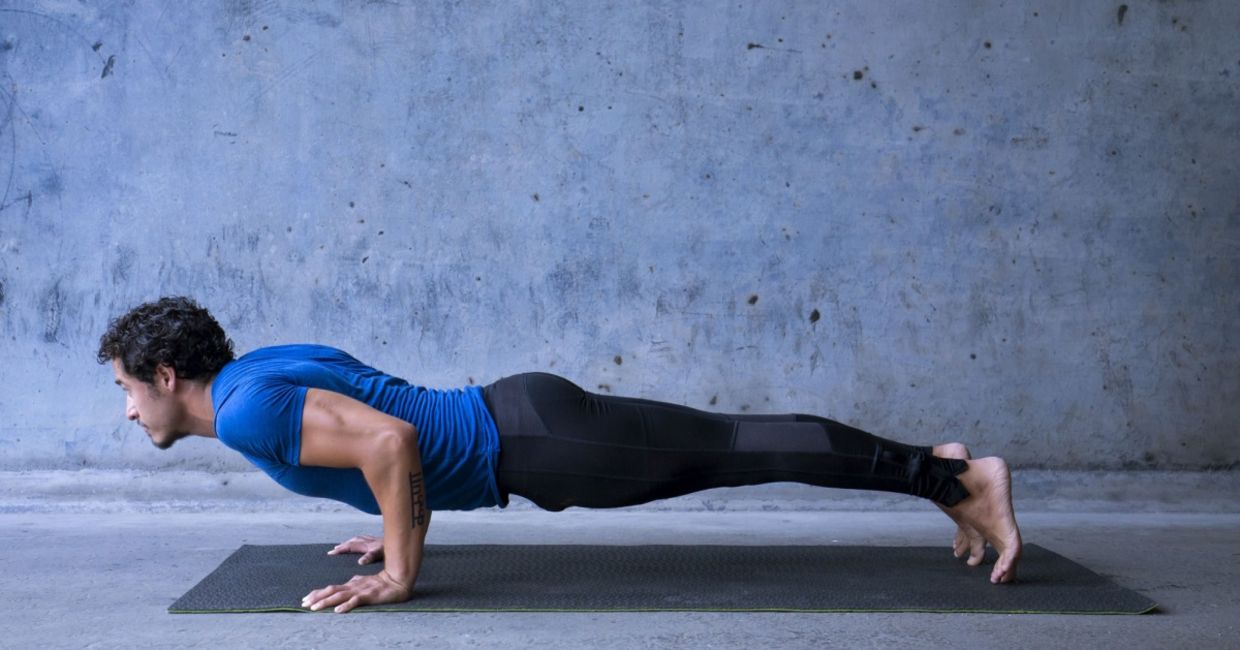
(Luna Vandoorne / Shutterstock.com)
Ashtanga Namaskara
This yoga pose opens the chest, improves back mobility and increases arm strength, as verywell fit explains. Allow yourself to enter the eight-point salutation from chaturanga dandasana. Gently rest your knees and chest, then chin on the mat below you. Keep your hands shoulder-width apart to support you and your hips elevated in the air.
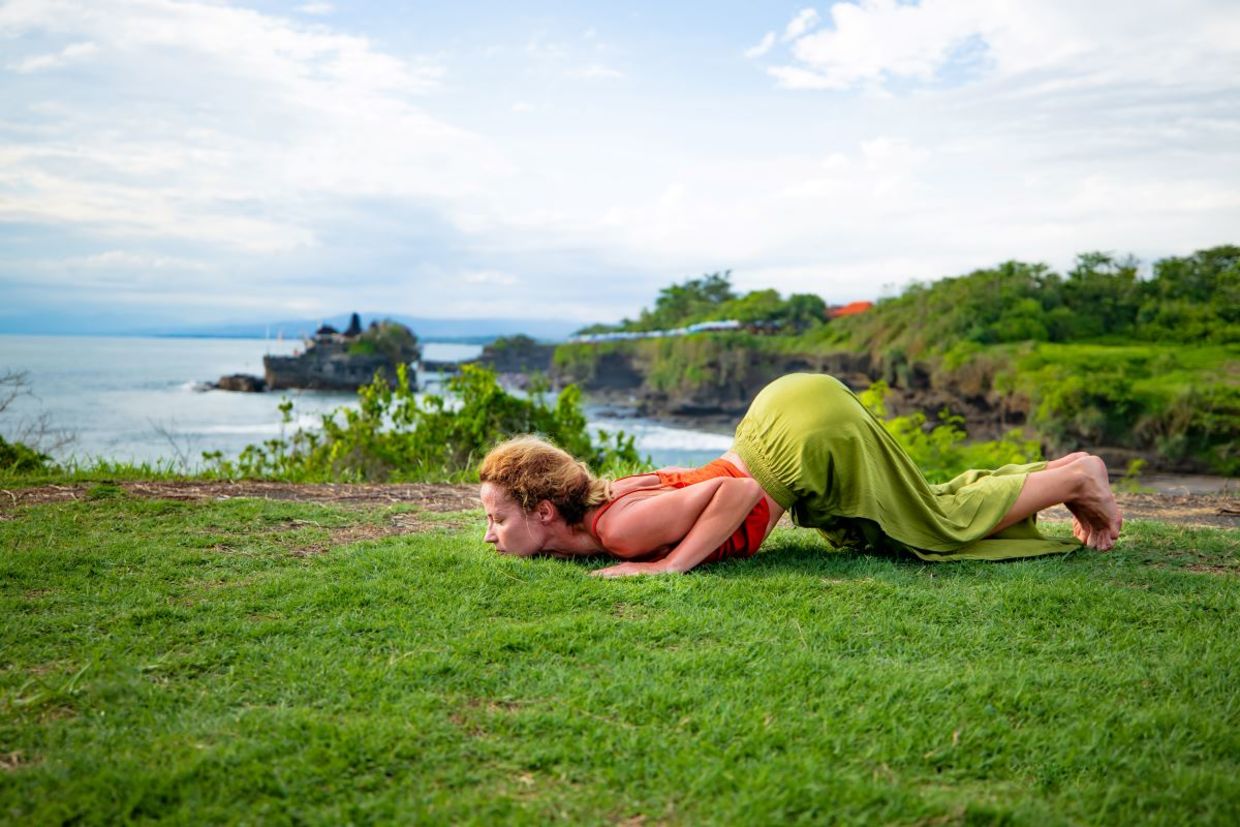
(Olga Gauri / Shutterstock.com)
Bhujangasana
In the cobra pose you can activate and energize the spine, according to the yoga resource website Ekhart Yoga. Begin by exhaling as you push through the ashtanga namaskar pose to arrive at the cobra pose. Keep your lower body connected to the mat while your upper body rises, head tall. Spend time here appreciating the slight backbend, finding support through solid wrists.
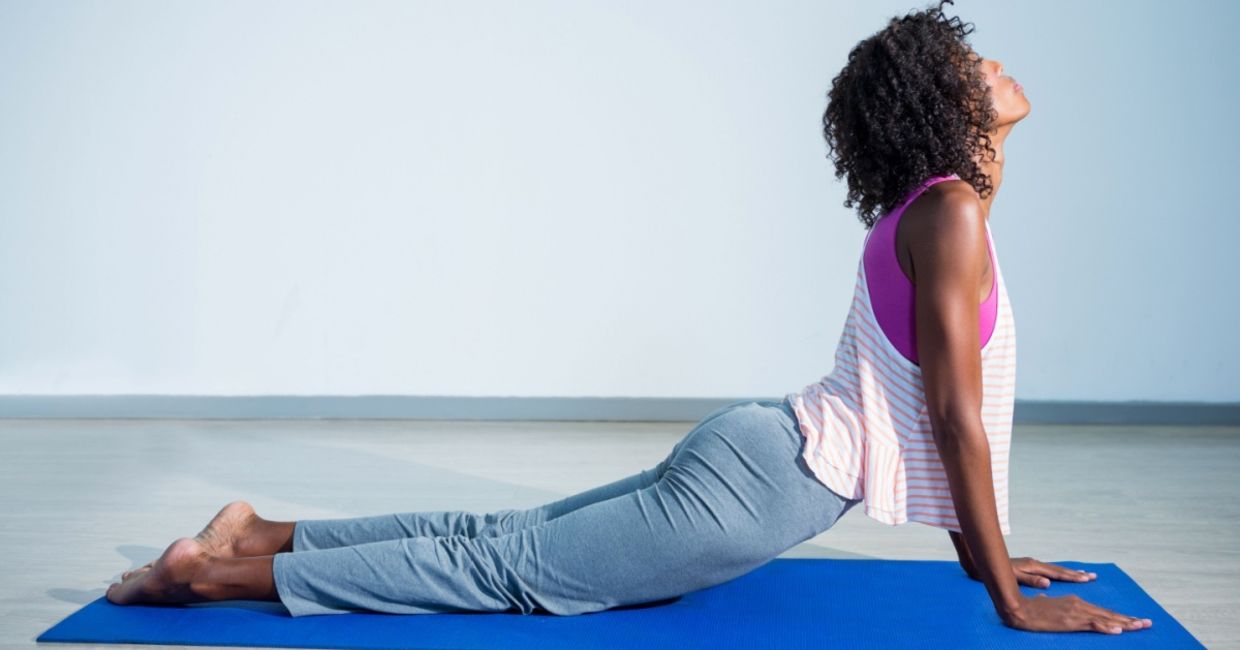
(wavebreakmedia / Shutterstock.com)
Parvatasana
The online guide Yogic Way of Life explains that the mountain pose stimulates the spinal region to increase flexibility. Begin by tucking your midsection inwards as you exit the bhujangasana pose and enter mountain pose. Align your hands and hips shoulder-width apart, allowing your head to fall between the shoulders naturally. Arms and legs stay straight.
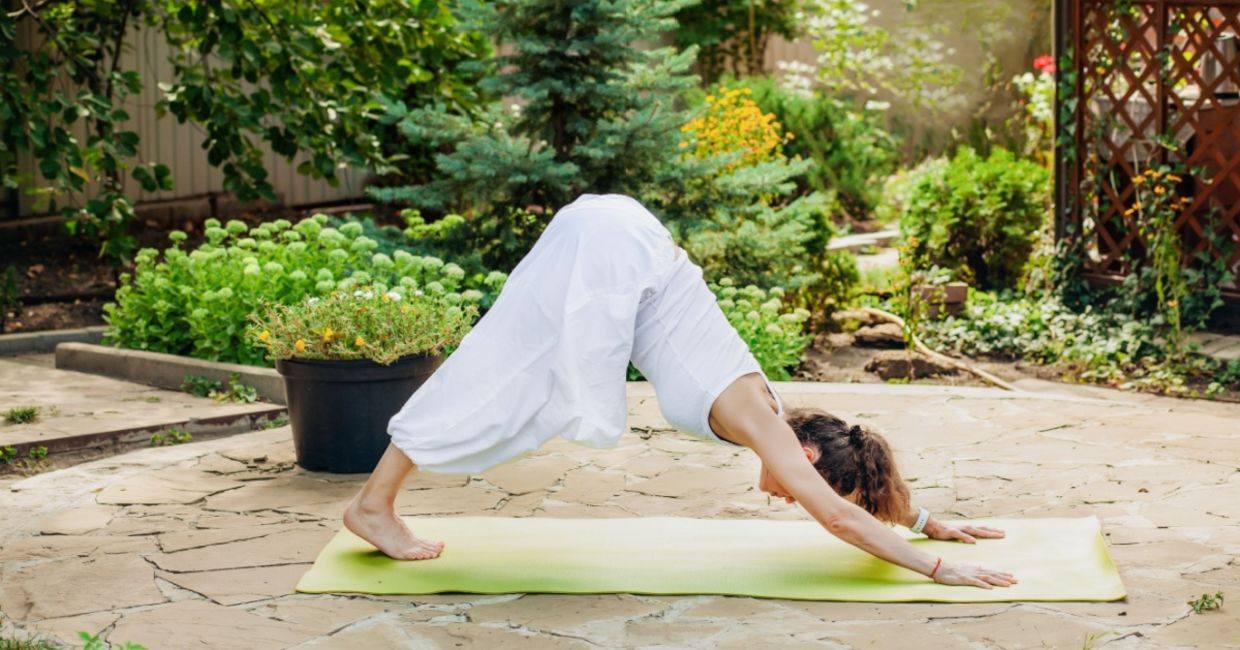
(Krasnikova Kat / Shutterstock.com)
Ashwa Sanchalanasana
From parvatasana, return to ashwa sanchalanasana. However, do the opposite foot instead of doing the same foot as you did in the fourth step. Restore balance and ease the muscles by completing this sequence on the opposite side of the body. According to Anahana, the low lunge pose opens your hips flexors and builds stability particularly in the legs and hips. By targeting both legs, you’ll ensure both sides receive attention and stretching.
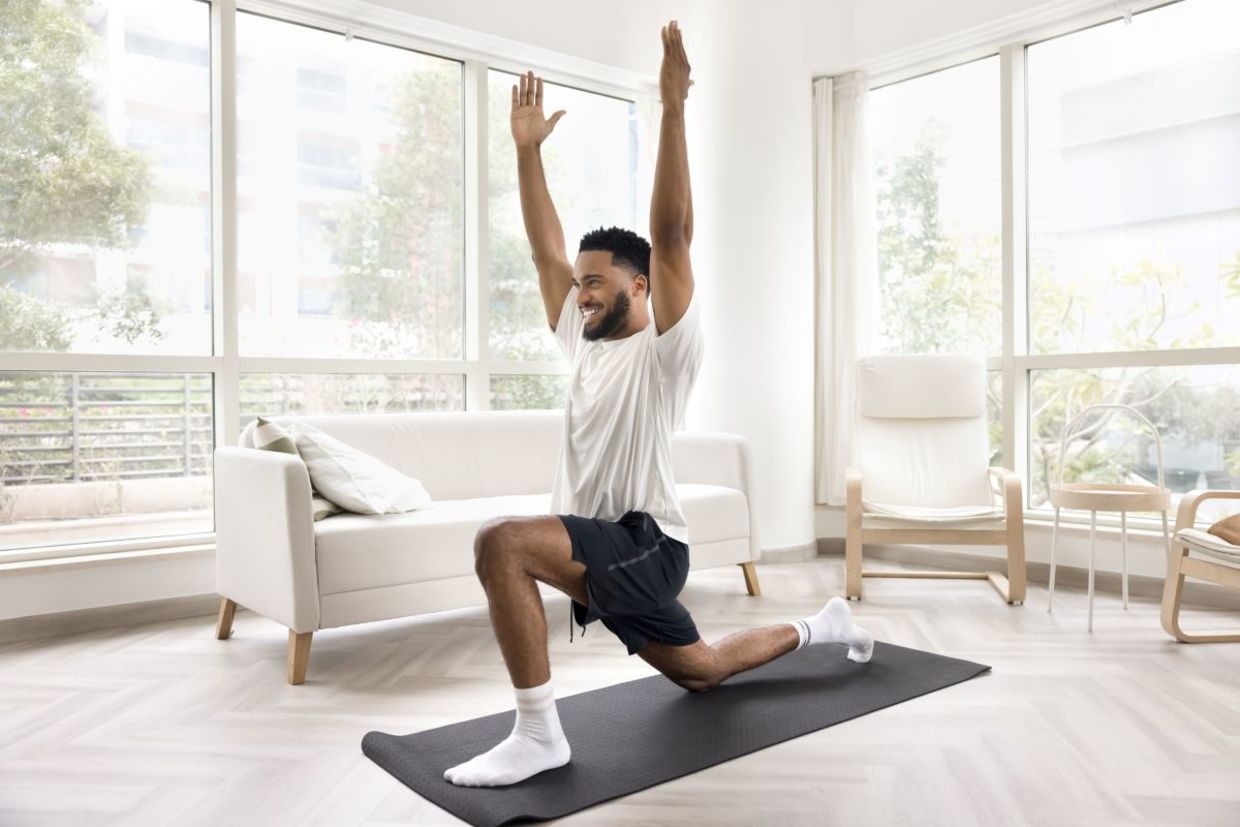
(fizkes / Shutterstock.com)
Hasta Padasana
Hastapadasana, often referred to as the Forward Bend Pose, is a yoga asana that involves bending forward and downwards from the waist to touch your toes with your hands. Bring your two feet forward to meet at the top of the mat and arrive in hasta padasana. This seemingly simple pose feels like a welcome break, as you release the spine and bow to the sun. And, according to the YogaPeace organization, the hasta padasana pose supports blood circulation and stretches your back.
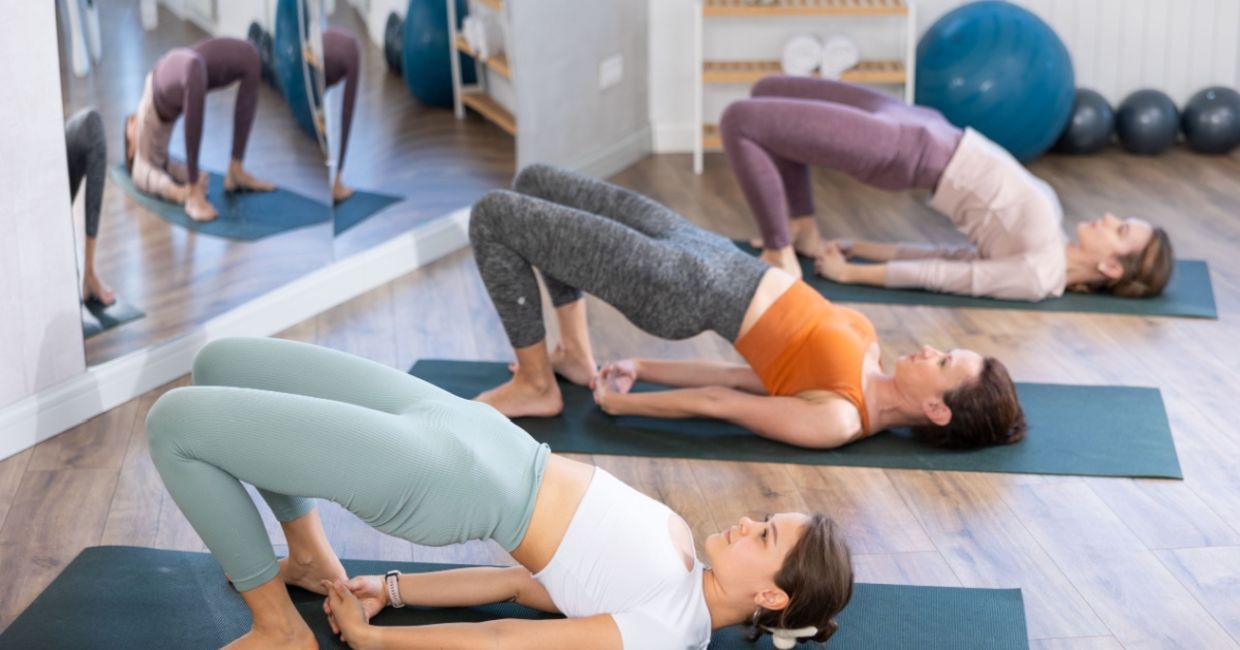
(BearFotos / Shutterstock.com)
Hasta Uttanasana
Tune into the breath and raise your hands upward as you inhale. Remembering that gentle backbend from the beginning of your practice. Here you will enter the pose. This movement between asanas brings fluidity to the sequence.
According to The Yoga Nomads, repeating poses helps deepen your practice. Feel powerful as you reach upwards toward the sky to embrace the day. See it as an opportunity to find new meaning each time you flow.
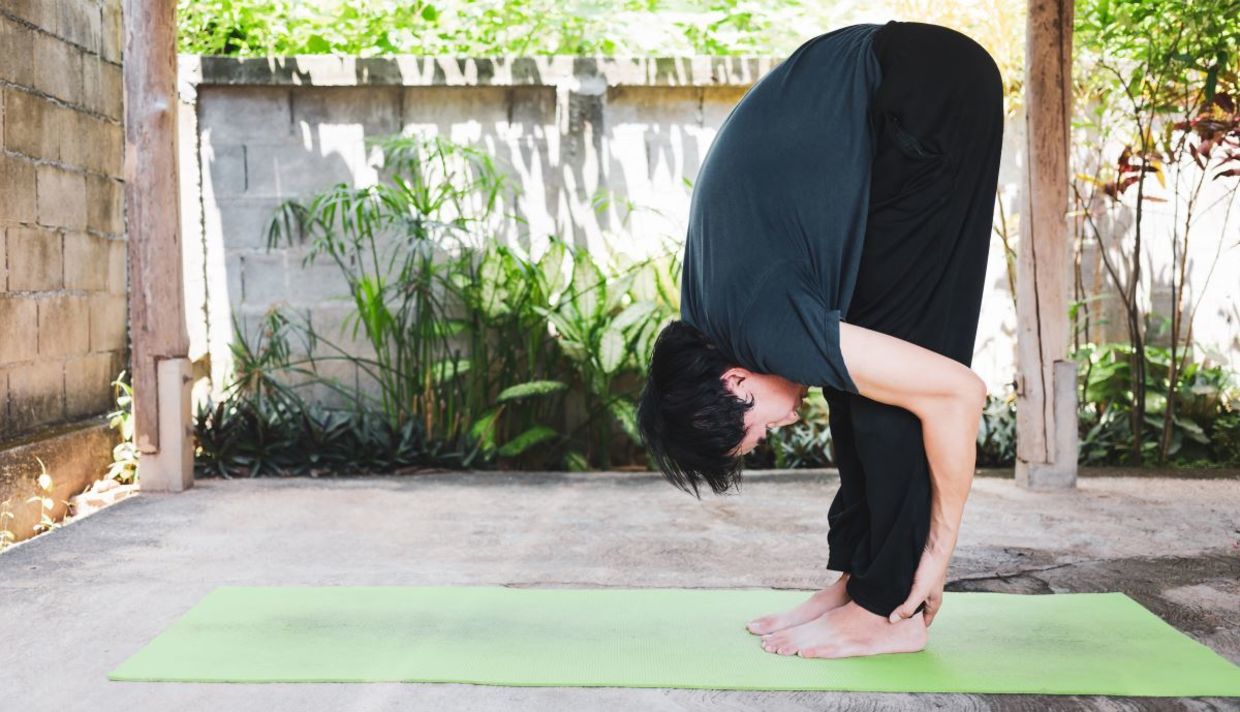
(Narong Khueankaew / Shutterstock.com)
Pranamasana
To bring your sequence of sun salutation yoga to an end, settle back into a prayer pose, according to Yoga Journal. Allow a deep exhale to accompany your final movement. Stay in this pose for as long as you wish to feel the benefits from flowing through surya namaskar.
These twelve steps represent one round of sun salutations. To complete the practice, flow through twelve rounds on the opposite side, bringing full-body balance and harmony.
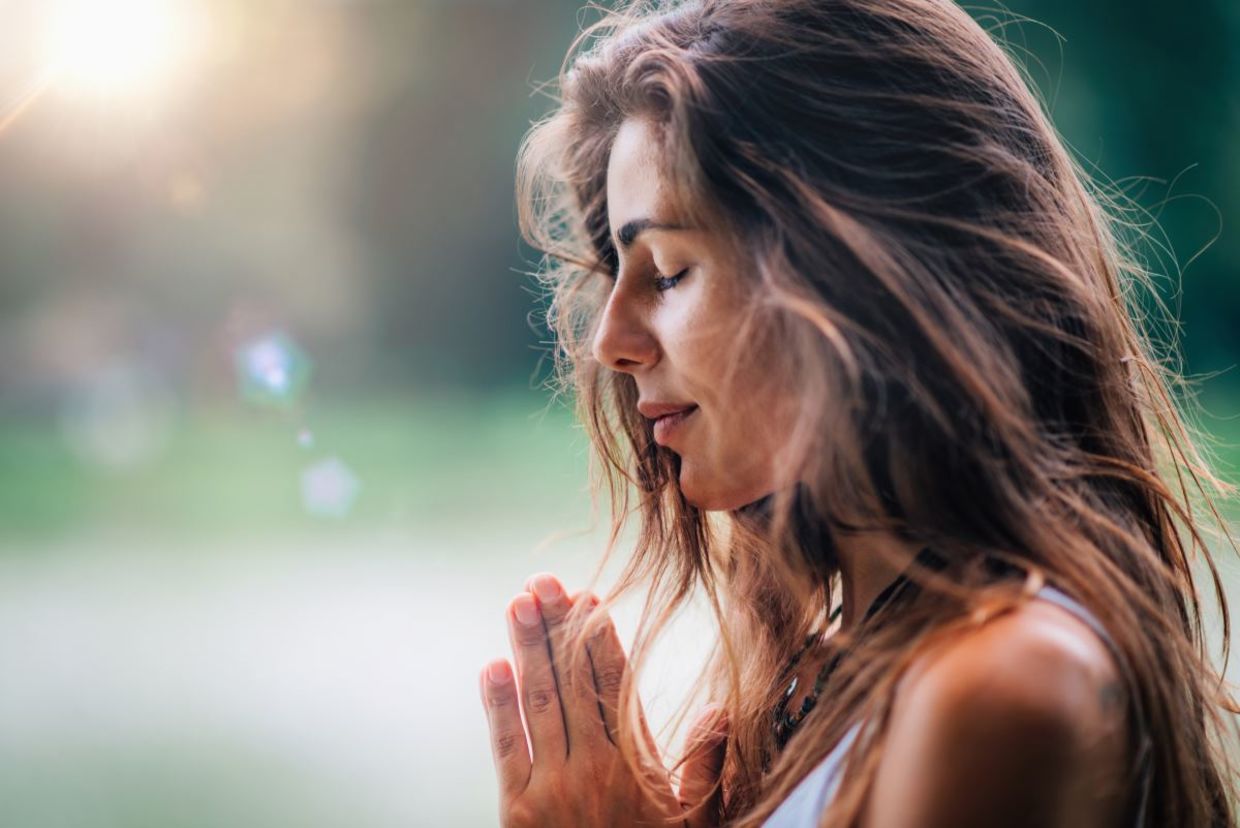
(Microgen / Shutterstock.com)







